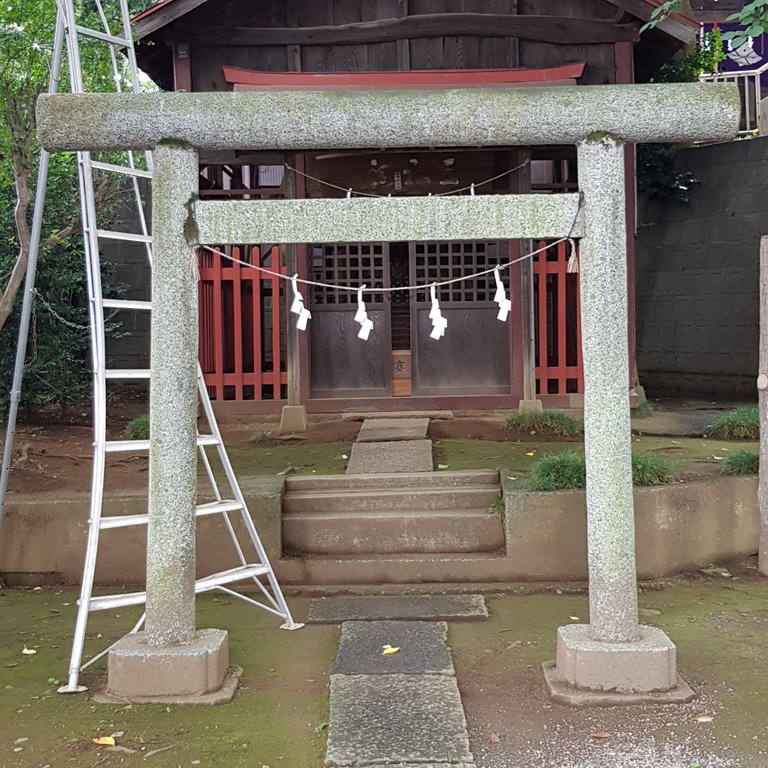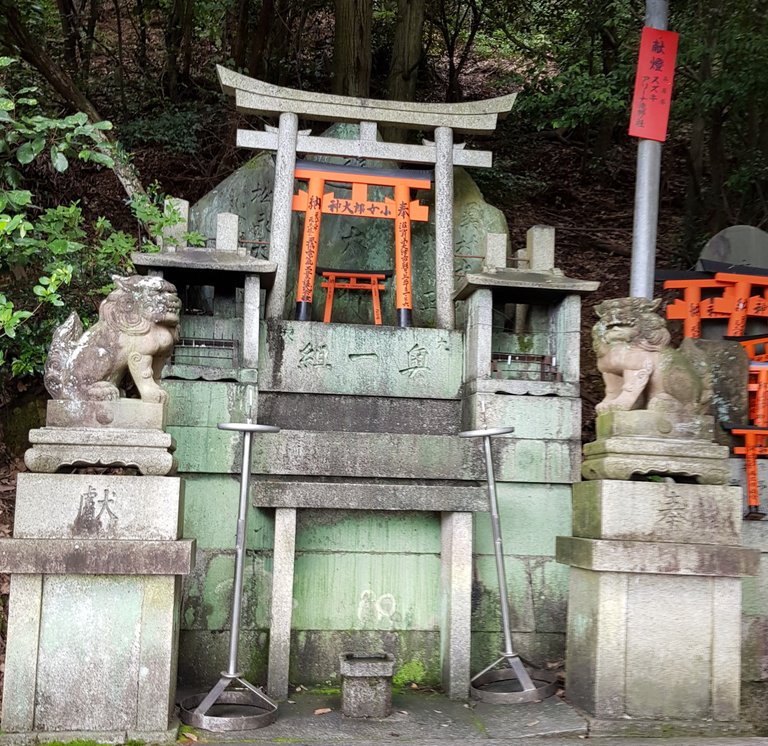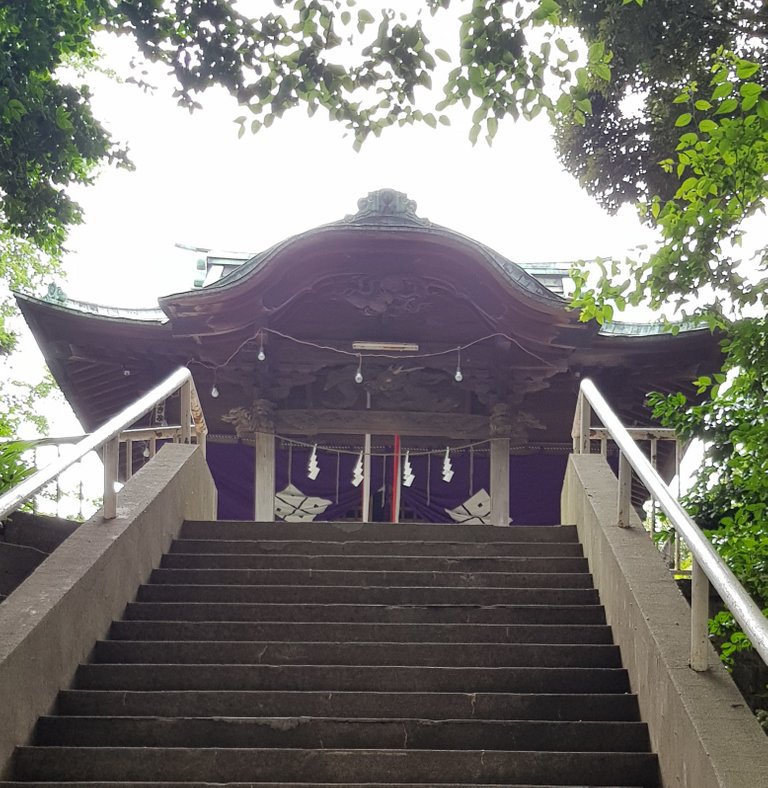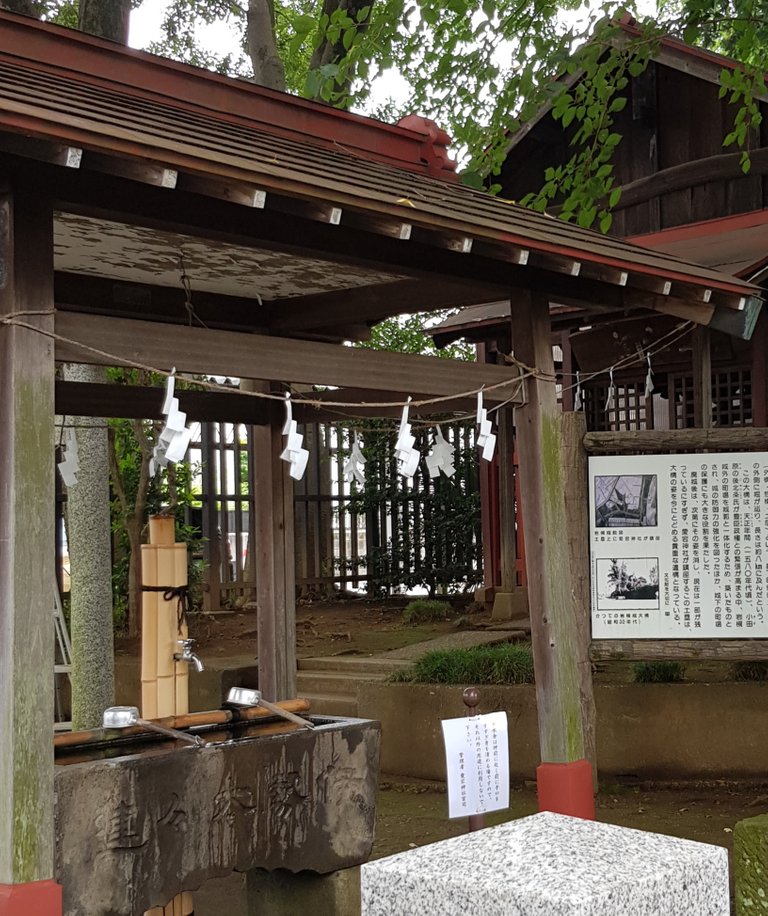As the rainy season is finally coming to an end and the sweltering heat of the traditional Japanese summer that I know and love hate has returned, I am coming to you live from a room with so much air conditioning running that I am expecting an angry Greta Thunberg to show up at my door at any minute, to talk to you about Shinto shrines yet again.
In one of my earlier posts, I talked about the Ise Grand Shrine, which can easily be considered the basilica of Shinto shrines both in terms both of sheer size and significance to Shinto as a whole, but today's topic is the countless humble local shrines, you see dotted throughout the Japanese landscape.

We are very far from the Ise Grand Shrine now
These are the places of worship not of the anthropomorphic major gods of the Shinto pantheon, that you will find in Japanese legends fighting demons and interacting with mankind, but the humble abodes of the countless faceless spirits, or kami, of nature: Local natural landmarks such as streams, rivers, ancient trees or large rock formations all contain kami according to the Japanese. These nameless kami act as guardian spirits and protectors of the local community and their small unmanned shrines are often surrounded by trees offering a small plot of nature in the middle of cities and suburbs, where such sights are far in between. Even more humble are the roadside shrines of the countryside, which are little more than tiny stone structures where the local populace will leave small offerings such as vegetables, beer or rice wine.

Tiny shrine in Kyoto. Roadside shrines can be even smaller than this
This is where the Japanese go for their everyday blessings, for the small spiritual boost you need in your workday or in school whereas you reserve the trip to one of the larger shrines for a time of need, such as before an exam or an important business meeting.
What is interesting about Shinto is that your local everyday shrine is at the same time both very similar and very different from the austere grandiosity of the large Imperial shrine complexes.

The architectural style is similar, as is the way you approach the shrine for worship: The alley leading up to the shrine building (usually starting with a Shinto gate), the steps where you stand when you pray, the and way you make an offering are all pretty much similar whether you are praying to the sun god Amaterasu or to the kami of the old Japanese cypress tree in your neighbourhood. Another feature that all but the smallest shrines and the big ones have in common is the ritual cleansing of both hands and mouth with water (using the ladles seen on the picture below) before entering the shrine premises.

Cleansing station in a smaller shrine in Saitama
The local shrines with their often striking orange gates have become a very integral part of the Japanese aesthetic for me and one that any newcomer to Japan is likely to notice. The shrines no matter how small have an unusual air of serenity surrounding them that makes them feel like they are somehow part of the surrounding city but not in it at the same time, making them great spots for a short rest or just a place to soak in the atmosphere and energy of the city around you from a safe distance.
Thank you for reading this entry in my Japan travel series! If you like this post, please leave an upvote and a comment and do not forget to follow me for more updates from my ongoing trip to Japan! Check out the earlier entries as well: Rain & Aquariums, Ise Grand Shrine, Bits, pieces & Impressions and Waterfalls & Mountains
Congratulations, Your Post Has Been Added To The Steemit Worldmap!
Author link: http://steemitworldmap.com?author=cogitecturePost link: http://steemitworldmap.com?post=summer-vacation-in-japan-5-local-shinto-shrines
Want to have your post on the map too?
This post was shared in the Curation Collective Discord community
community witness. Please consider using one of your witness votes on us here for curators, and upvoted and resteemed by the @c-squared community account after manual review.@c-squared runs a
Daily Travel Digest #579.
 Hiya, @LivingUKTaiwan here, just swinging by to let you know that this post made into our Honorable Mentions in Your post has been manually curated by the @steemitworldmap team. If you like what we're doing, please drop by to check out all the rest of today's great posts and consider upvoting and supporting us.
Hiya, @LivingUKTaiwan here, just swinging by to let you know that this post made into our Honorable Mentions in Your post has been manually curated by the @steemitworldmap team. If you like what we're doing, please drop by to check out all the rest of today's great posts and consider upvoting and supporting us.
Thank you for your contribution to the crowd. We are the Steem community project dedicated to empowering The Wisdom of Crowds. You can find more about us on our official website or whitepaper and you can support us by voting for our witness and joining our curation trail on Steemauto . We are also inviting you to join Crowdmind Discord server. Don't forget to use the #crowdmind hashtag and happy crowdsourcing!
Very neat looking pictures. It's nice to see different architecture then what you're used to seeing. I like the entirely wooden structures they build as well, forget the name for it.